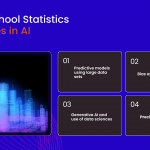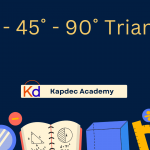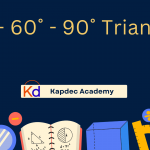Over the last decade, online education has shifted from being seen as an experimental option to becoming a mainstream and reliable mode of learning. From school students to working professionals, millions are embracing online classes, e-learning platforms, and virtual degrees. Yet, myths about online education still create doubts in the minds of learners and parents.
These misconceptions are often based on outdated assumptions or limited experiences with early online courses that lacked structure. But with today’s technology, online learning has transformed into a rich, interactive, and highly effective medium. Let’s explore and debunk the most common myths one by one (Refer).
1. Myth: Online Education is Less Effective than Traditional Learning
Reality: One of the biggest misconceptions is that physical classrooms automatically provide better learning. In truth, the effectiveness of education depends on the design of the course, teaching style, and student engagement—not the medium.
Modern online courses use:
- Recorded sessions for flexibility.
- Live interactive classes to replicate classroom discussions.
- Quizzes, polls, and simulations to test understanding.
- AI-driven tools that adapt to each student’s pace.
A major advantage is that students can revisit lectures multiple times, something impossible in a live physical classroom. Research from leading universities has shown that blended and online learning often produces equal or better learning outcomes compared to traditional setups.
2. Myth: Online Courses are Too Easy
Reality: Online education is often thought of as a shortcut, but that’s far from true. In fact, online courses demand more self-discipline and time management than classroom courses.
Assignments, strict deadlines, and proctored exams ensure academic rigor. For example:
- University-led MOOCs (Massive Open Online Courses) require weekly graded tasks.
- Professional certifications demand project submissions and real-world case studies.
- Some platforms even have AI-based plagiarism checks to ensure integrity.
Thus, online learning is not easier—it’s equally or sometimes more challenging.
3. Myth: There’s No Real Interaction in Online Education
Reality: Early online courses were text-heavy and one-directional. But today’s platforms integrate interactive technology that creates an engaging experience.
Students can:
- Join live video lectures with real-time Q&A.
- Participate in discussion forums and breakout groups.
- Work on peer-reviewed projects.
- Use collaborative tools like virtual whiteboards, polls, and chats.
In many cases, students who are shy in physical classrooms feel more comfortable asking questions online. Online education not only offers interaction but also widens networking opportunities—you can study with peers from different countries and cultures.
4. Myth: Online Degrees Don’t Hold Value
Reality: Earlier, employers were skeptical of online certifications. But today, with accredited universities and recognized platforms like Coursera, edX, and university-backed online programs, online degrees hold the same weight as traditional ones.
For example:
- Institutions like Harvard, Stanford, and IITs now offer online programs.
- Many companies actively encourage employees to take online certifications to upskill.
- Employers view online learning as a sign of initiative, adaptability, and self-motivation.
So, the perception has shifted—online qualifications now carry equal credibility when accredited.
5. Myth: Online Learning is Only for Tech-Savvy Student
Reality: A common fear among parents and older learners is that online education requires advanced digital knowledge. But most platforms are built to be simple, user-friendly, and accessible.
Features like:
- One-click access to classes.
- Mobile-friendly learning apps.
- Built-in technical support and tutorials.
These ensure that anyone with basic internet skills can succeed. The idea that only tech experts can thrive online is outdated.
6. Myth: Online Education is Lonely and Isolating
Reality: Another misconception is that online students study alone without any community. But in fact, online programs often create stronger networks than physical classes.
Examples:
- WhatsApp/Telegram study groups.
- Virtual clubs, mentorship sessions, and discussion boards.
- International classmates offering cultural exchange and global perspectives.
In reality, online education can create friendships and professional networks across borders.
7. Myth: Online Education is Just a Temporary Trend
Reality: While COVID-19 accelerated online learning, the trend is far from temporary. Online education has become a permanent and growing part of the global education ecosystem.
Why?
- It offers flexibility for working professionals.
- It’s cost-effective compared to physical programs.
- It connects global learners with expert instructors.
According to reports, the global e-learning market is expected to surpass $375 billion by 2026. Clearly, online education is the future, not just a stopgap solution.
FAQs: Myths About Online Education
Is online education less effective than classroom learning?
No. Studies show that online education can be equally or more effective when courses are well-structured, interactive, and supported with digital tools.
Are online courses easier to pass?
Not at all. Online programs have strict deadlines, proctored exams, and real-world assignments. They require strong self-discipline and consistency.
Do online degrees have value with employers?
Yes. Accredited online degrees from recognized universities and platforms are now widely accepted by employers across industries.
Is online education only for tech-savvy students?
No. Modern platforms are simple, user-friendly, and designed for learners with even basic internet skills.
Does online learning mean no interaction with teachers or peers?
Wrong. Today’s online courses include live classes, Q&A, discussion forums, and group projects that enhance collaboration.
Is online education just a temporary trend?
No. Online education is here to stay. With flexibility, cost-effectiveness, and global reach, it is a long-term solution shaping the future of learning.
Conclusion
Online education like Kapdec is no longer the “second-best” option—it is a powerful, flexible, and globally accessible system that complements traditional learning. By debunking these myths, we open doors for millions of learners to embrace its benefits.
Instead of seeing it as less valuable, we should recognize it as a gateway to growth, inclusivity, and lifelong learning.







